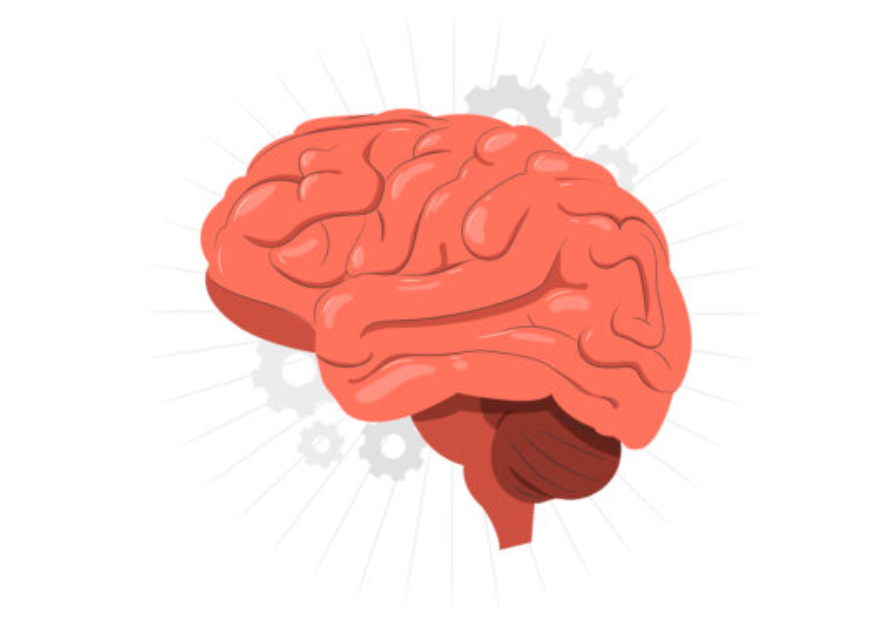
Recent Posts
Please feel free to share this with anyone who needs it
In the first session of all therapy, and every one thereafter, the focus should be on communication. Trust hinges on an active, non-judgmental exchange of ideas. Although there are different definitions of “solutions-based” therapy, for purposes of this article, I define it as a therapeutic approach that is measurable, driven by science and evidence, using between work and psycho-education, and directed by concrete solutions that are immediately available. Not advice driven, but rather is focused on good evidenced-based concepts.
In my experience, therapy should always include “experiments”, tools, techniques, proven approaches, and quantifiable measures, of each element of the therapy. During the classes that licensed therapists complete in graduate school, the focus is always on good science. Too often however, as therapists, we can leave science behind in our sessions. We expect good robust science from our doctors, and we should also expect the same from our mental health professionals.
For purposes of this introductory article on solutions-based therapy, I will focus mostly on the effect of negative thoughts. If you are like most people who seek therapy, it is probably due to your struggle with negative thoughts. I rarely find that people asking for help, are doing so because of trouble with too many realistic positive thoughts. Do you find that you need to remind yourself to think negatively? Probably not. But I bet you do have to remind yourself to think positively. What I personally hear about in therapy, is the constant struggle with negative thoughts.
A sample of subjects that might be discussed in session #1 of solutions-based therapy (this is only a sample, the tools and techniques change to match the person’s individual needs)
What effect do you believe your thinking has on your life? Small, medium, or large? If you think your thinking can have a large effect on how your life turns out, would it make sense to spend some time getting to know your brain? Unless you have a brain transplant planned, you and your brain will be together for a very long time. Like any successful long-term relationship, time spent getting to know the other “person”, is time well spent.
The first step in building a successful relationship, is to know the other person’s name that you want to have the relationship with. In this case, your brain may not have a name, so think for a few seconds what an appropriate name might be for your brain. It can be anything that you want – the important thing is that he/she/it has a name. From a psychological standpoint, this is referred to as a “distancing technique”. Now that your brain has a name, anytime that you are having a conversation between your ears (referred to as “self-talk”), please use the new name for he/she/it.
The next step in getting to know your brain is to “notice” your thinking. This term is referred to by several names, but I prefer to call it noticing. The term noticing does not mean just recognizing the thought, but noticing involves doing it in a different way than you normally would. When you are using the noticing technique, you will not only recognize the thought, but you should also do it as if you are a curious scientist, discovering a new species for the first time.
Or for example, the way you might notice that the car next to you at the stop light, is blue. You are not anxious, depressed, joyful, struggling, analyzing, trying to avoid the thought, turning it into a positive, trying to run from it, or angry at the blue car – you are just noticing it. The opposite of struggling.
This technique allows you to discover information about your brain, without becoming involved in the usual conflict. To help you begin to explore this tool, stop whenever you think about it during the day, and just notice your thoughts. Stop now and notice what your brain is thinking. Was it painful to do this? Did you feel like you were set on fire? Was it difficult? You may have had difficulty noticing only one thought at a time, but most people report that it is a relatively easy thing to do. The more that you do this, the easier it will become. Writing it down, will also make the experiment, even more revealing. Remember, just notice it!
If the thought is negative, after you notice it, it is helpful to further distance yourself by labeling the thought. If it is an anxious thought, label it as anxious. Depressed thoughts are labeled depressed, angry thoughts as angry, and so on. Next I like to thank my brain. Our brains are trying to help, but they don’t always know what to do in this modern society. Our brain’s main purpose remains as a “don’t get killed machine”. Fifty thousand years ago, your brain’s primary goal was to keep you alive. Constantly worried about the lion. Although society has evolved, your brain has not always kept up.
After thanking your brain, to prevent you from starting to struggle with the thought again, let the thought go. Your brain will fight that approach, always believing that thoughts must be acted on. But what is your experience? When you struggle with your thoughts, do they get bigger, or smaller? Weaker, or stronger? So far, have you come up with any struggling technique that results in negative thoughts going away forever? Or, even for 5 minutes, 30 minutes, an hour, a day…? If not, what do you have to lose by letting the thought go? If it comes back, notice it, label it, thank your brain, and let it go again.
The tools list I will provide in our next session, has several exercises you can do, to increase your ability to let thoughts go. If you are willing, we can try one now. I will time our experience with my phone for one minute to start, but you can use anything you like at home. As you practice this technique, increase your time each session, until you can do this exercise for 4 – 5 minutes. Even if you are not able to accomplish 4 – 5 minutes, any amount of time over 1 minute will help.
To begin, we will take ten 4-7-8 breaths. This breathing approach involves inhaling for a count of 4, holding for a count of 7, and exhaling for a count of 8. It may take several tries to exhale for a total count of 8, and that is not a problem. This type of pattern breathing is used by U.S. Air Force pilots, the night before a mission. It has been scientifically proven to reduce stress, activate the parasympathetic nervous system, and reduce cortisol which is a chemical associated with stress.
After you have completed 10 breaths, I want you to imagine that you are sitting with your eyes closed along a stream on a pleasant fall day. You can feel the breeze, smell the fall air, and hear the sounds of squirrels in the trees, and the cold clear water flowing by you. The sunlight is warm on your shoulders, and you can see the leaves flowing by you, on the stream. The stream flows away from you, curves sharply, and disappears. As you watch, the leaves move away from you, and disappear too.
As you sit by the stream, begin to notice your thoughts. Your brain’s thoughts flow slowly, and you can notice each one. Just like the leaves on a stream. When you notice your thoughts, there is nothing to be done with neutral, or positive thoughts. When you notice a negative thought however, simply place it on a leaf and watch it flow away. Continuing watching until the leaf has curved away and disappeared.
When the leaf disappears, go back to your brain’s stream of consciousness. As before, there is nothing to do with neutral, or positive thoughts. Negative thoughts however, should be placed on a leaf and allowed to drift away from you. All brains wander, and expect yours to wander too. When he/she/it does wander away from the exercise, gently lead it back to your thoughts. Imagine your brain is a small child, maybe 2 or 3 years old, who is 100 feet away from a busy street, and is wandering that way. Gently call he/she/it by name, take its hand, and bring it back to noticing your thoughts.
When the alarm sounds on my phone, please open your eyes, and tell me what you noticed. I would like to discuss what parts you found easy, and what parts you found hard. We can begin the leaves on a stream exercise now.
In research, people report that letting go of thoughts, results in the negative thoughts coming back less often. When they do, they seem to have less control. If you are willing, I would like to suggest, that you do this exercise at least once a day, between now and our next session. If this approach does not work, you can always go back to struggling with your thoughts. It is not like, that approach will not be available to you again.
To reinforce all new techniques, I would like to suggest that you consider applying the closest thing to magic that we have – something that works 100% of the time. It is called “practicing”. In fact, when we practice something, we cannot refuse the learning, and we cannot unlearn it.
When we practice something, several things happen. First, practice creates a neural circuit, and the more that it is used, the more the brain selects it. Eventually, with enough practice, that circuit will not only be selected first, but it will also run at a nanosecond.
With even more practice, it will become part of the subconscious part of our brain (referred to as the Limbic System). It is now available without any conscious thought (for example, walking, talking, driving, getting dressed, reading, etc.). This is called a habit. Something that when triggered, happens with little conscious thought.
Unfortunately, practice does not care if what we are learning is helpful, or not. I know you will agree, that all of us have both good, and bad habits. Not only physical habits, but psychological habits. Ways that over time, we do automatically (Psychology calls them “ANTs” – automatic negative thoughts). In a future session, I will talk more in depth about habits, and what can be done to deal with unhelpful ones.
As a recap, we have talked about the importance of knowing and understanding your brain. We discussed distancing techniques. First, to allow yourself distance, you named your brain. Next, you practiced noticing your thoughts. Not struggling with the thoughts, just noticing them. When you noticed your thoughts, you labeled them, then you thanked your brain. Finally, you practiced letting your brain’s thoughts go with an exercise called leaves on a stream.
Between now and our next session, if you are willing, I would like for you to do several things. First, please begin to call your brain by its name in all discussions between your ears. Next, during the day, notice your brain’s thoughts, at least 15 times each day. Writing down your thoughts will allow us to identify any thinking habits your brain may have.
Once you notice your thoughts, label them, thank your brain by name, and let your thoughts go. For letting your thoughts go, use the leaves on a stream approach. Practice the leaves on a stream exercise at least once a day, between now and our next session. Between sessions, I will send you several attachments, for you to read before the next session. If you have any questions about the between work, or the new attachments, please do not hesitate to text, or e-mail me. Any questions? Cheers!
In summary of this article, I have suggested that solutions, evidenced-based therapy, for therapists who do not normally practice it, should be considered. I have also given an example of a first session in solutions-focused therapy with several concrete, actionable tools, that the person in the session can use immediately.
If this very short article is useful to you, please let me know. If there is sufficient interest, I will be happy to write follow-up articles, with more concrete tools and ideas that you can use immediately, in your life. Remember – choose Peace.



